The Model Mayhem Interview: GW Burns
GW Burns is a glamour and fitness photographer based in Sarasota, FL. His work has been published in many national magazines and online. GW’s powerful imagery often combines an exotic location with a beautiful model and the stylish influence of his art background. GW also teaches workshops all over the world, in locations such as from Greece to Portugal, the Dominican Republic to Costa Rica.
– MM EDU
MM EDU: Tell us about your background and how you became a photographer.
GW Burns: I always was a little bit of an artist. I used to draw and paint as kid; then when I went to college I minored in art. I was the type of person that could copy anything but I couldn’t draw or paint out of my head. What I ended up doing was kind of plagiarizing other people’s photographs and I would draw from those but when I was in college I decided to start taking my own pictures and drawing from those.
In those days I was in the graphic design department at the university but I started sticking my nose into the photography lab and that gave me the bug to move to photography. After college I was a tennis pro and coach for 27 years and photography was more of an afterthought. I started dating a girl and taking her pictures and my passion for photography was rejuvenated.
I started posting some of my photos online and then the next thing I knew other people wanted me to shoot them and the rest really fell into place. Because of my art background I was more of a digital artist than a pure photographer. We’re going back to when Photoshop was a new tool, and I was an early adopter. I really experimented with it and pushed myself creatively.
I had a profile on One Model Place (OMP) before Model Mayhem existed, and they featured me on the site. This is back when OMP was a big site and that thrust me into the limelight. That inspired me to work even harder and learn more about my craft.

Photographer: GW Burns; Model: Kelly
I started studying more about photography and I started holding workshops a few years later. I also surrounded myself with very talented photographers, people I really respected, and whenever they would talk I would listen. I created an environment that’s really conducive to learning and that helped tremendously.
The more I learned the harder I tried to get it right in-camera and not have to rely on Photoshop. That’s very important because as demand for my services grew I had less time to work on post-production. Clients can be very demanding and expect a fast turnaround. If your images require hours of retouching it’s impossible to do all the work in time.
This is a very competitive industry and I needed an efficient workflow to keep my head above water. That was done by becoming a better photographer. I worked really hard and constantly pushed myself to shoot a lot because that’s how you improve.
If you’re really churning it out you’re going to be able to accomplish things that you’re really proud of. I mean, it’s always a work in progress but your work ethic has to be strong in an industry where not everybody has that.
There’s no way I could’ve imagined back then that I would be teaching workshops, but I had 11 guys at my first workshop and I just started thinking, “Well, maybe I’m doing what I should be doing.” I feel that everything that has happened to me is a life calling and that’s why I’ve worked so hard to make it happen.
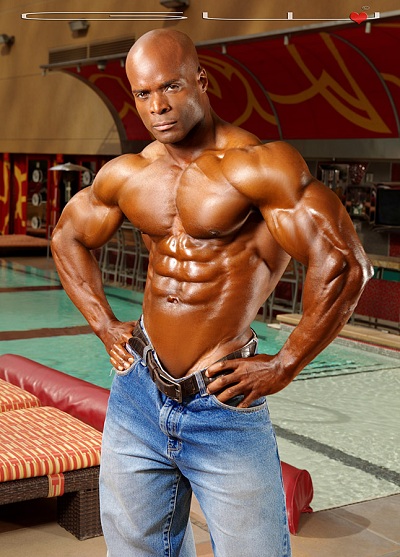
Photographer: GW Burns; Model: Morris Mendez – 2012 Musclemania Fitness America Champion
MM EDU: That sounds a lot like the old adage that when you’re doing something you love it doesn’t really feel like work.
GW: Absolutely! The coolest thing about what I do for a living is that when you look at my portfolio every image you see is exactly what I saw at that moment in my life. I get to share my life with other people forever, even when I’m gone from this earth people can still see the world through my eyes, and that’s one of the coolest things that anyone can experience. I’m so blessed to be able to do that. When you have a passion for what you do in life everything else just feels right.
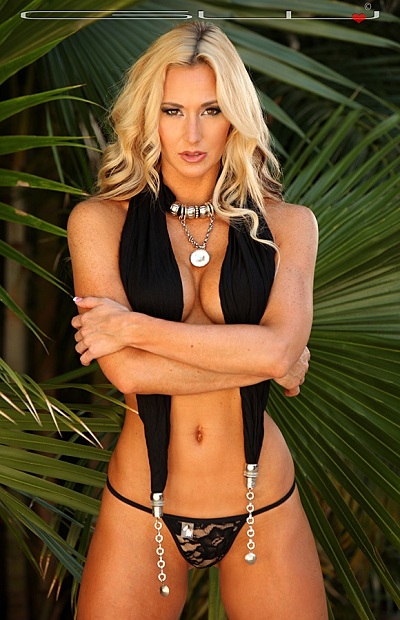
Photographer: GW Burns; Model: Jeni Summers
MM EDU: Can you explain a little bit about what the vision is you’re trying to capture in your portfolio?
GW: My favorite type is where I take an exotic location and bring a beautiful model into that environment. I try to create a picture that has a little bit of wonderment, a little bit of mystery and a little mystique to it. I want people to wonder what the story behind the image is. I love to go out to a jungle, desert, great rock formation, or ruins and create something special.
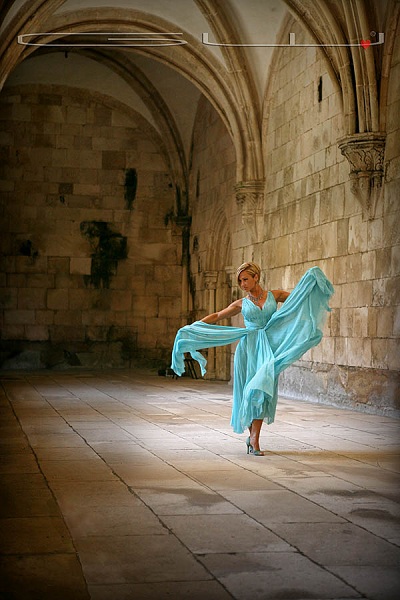
Photographer: GW Burns; Model: Jaime Eason
MM EDU: Who inspires you as a photographer?
GW: My influence comes from the old masters paintings and my art history background, so people like Renoir, Rembrandt, David, Vermeer, and many other artists rather than photographers. I think you can see those influences in my work, especially in my low-key stuff where you can see some Rembrandt and Renoir.
MM EDU: Do you have a favorite location or most memorable shoot?
GW: I’ve had the privilege to shoot all over the place: Athens and Santorini in Greece, the jungle in Costa Rica, Antelope Canyon, the Valley of Fire, the waterfalls of Jamaica. I could just go on and on, but really, shooting in all those environments with a beautiful model is a blessing. It’s that combination that makes it almost intoxicating!
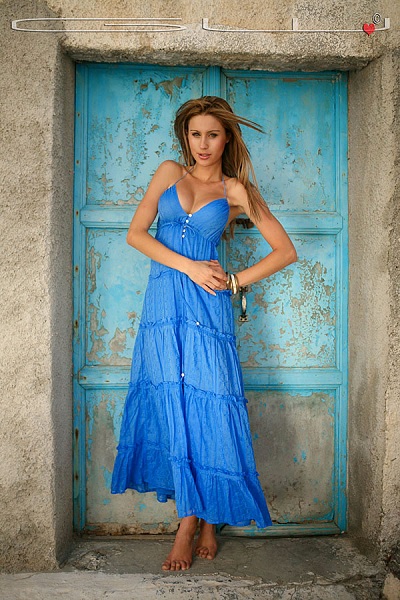
Photographer: GW Burns; Model: Kate
I shot in Antelope Canyon and I had to have Native Americans take us there as guides because it was on their reservation. We were shooting fine art in these slot canyons that are just unbelievable. It’s all sand stones cut from the water over millions of years. There are these little cracks in the earth that you can go through and when the sun goes overhead it’s just like a beam of light that goes straight down. I was shooting in there with another photographer and these Native Americans were playing their music while we’re shooting and I was getting goose bumps. I looked up and I said, “Wow, you can take me now and it would be alright.” I also shot in some castles in Portugal where it was a similar experience. They had a medieval day when we were there and everyone was dressed in the regalia. There were knights riding horses down the road in this castle and I was a part of it. It was almost like going back in time and we’re shooting these beautiful models, too. Those are very special moments and much more special to me than something that might be materialistic. It’s not about the money; it’s about those moments that I can share with other people. Those are the most memorable shoots for me.
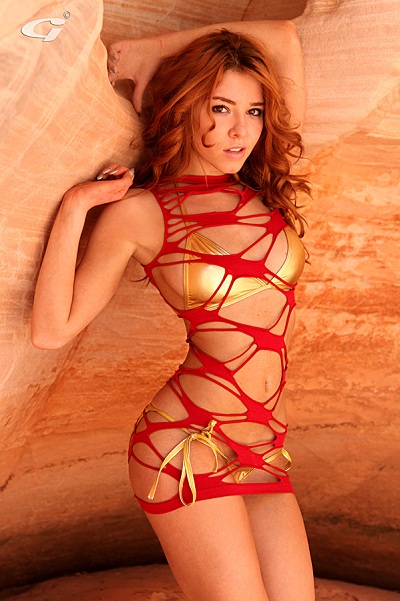
Photographer: GW Burns; Model: Christina Albert
MM EDU: It’s like you’re always looking for this perfect combination of a very specific location and the ideal model.
GW: There are ideas I’ve stored in the back of mind that are waiting for the right model. As soon I see her I’ll say, “You’re perfect for this.” I have a picture in my portfolio of a girl wearing a tutu and a black kind of derby hat with the sunset between her legs. The moment I saw that model, Kat Morandi, with her long legs I knew she was perfect for the idea I had in my head. It’s the same thing with so many of the images in my portfolio. The model seemed to perfectly match the idea and that’s why we shot it.

Photographer: GW Burns; Model: Kat Morandi
MM EDU: How would you describe your style?
GW: I’m shooting a lot of fitness right now and I had one of the promoters say that I’m kind of a portraitist; that’s the way he referred to me and I kind of like that term. It’s more than just a picture of somebody; it’s a picture about somebody and that’s where I feel like I found a little niche, individuality or maybe a signature style.
I like all of my images to have an emotion or feel to them. Some of my most memorable images are the ones where maybe the weather wasn’t ideal. Perhaps there were storm clouds overhead and the sun wouldn’t come out, but that challenge forced me to be even more creative.
When I first encountered obstacles like that I would get a little down and wish the weather was better, but now I enjoy it. I feel that God is giving you a canvas that he wants you to paint on, so I just run with it and that often results in my best work.
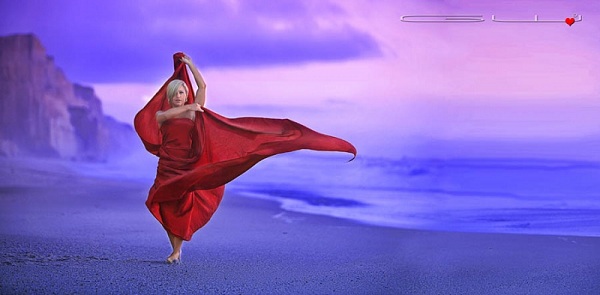
Photographer: GW Burns; Model: Jamie Eason
MM EDU: It sounds like you enjoy the challenge?
GW: I do! I did a motorcycle shoot recently where the model was wearing all white, with a white bike, and the sun directly behind. It’s very easy to blow out the white highlights in that particular image but I like challenges like that — here in Sarasota there are white beaches with bright blonde-haired models and you’re going to have some issues like that if you’re not careful.
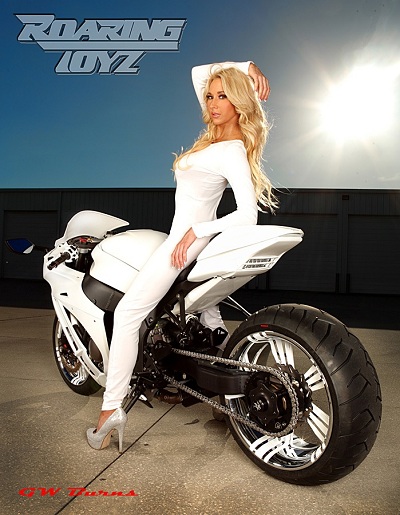
Photographer: GW Burns; Model: Jeni Summers
In a typical photo shoot I try to produce both a low key setting and high key setting so that whatever the editor’s fancy is, I’ll probably hit his hot buttons either way. Diversification can meet other people’s needs and desires, which is the number one ingredient for a commercial photographer because you’re shooting for other people, not yourself.
MM EDU: You shoot for some of the top magazines including People, GQ, Maxim, and many muscle and fitness titles. What’s the secret to your success?
GW: It’s different when shooting for magazines. Those shoots tend to be more commercial or editorial and if you’re too artistic the pictures may not fit with what they’re trying to do. That’s where you have to be able to adjust. When I’m shooting for my portfolio, I create an image that has a lasting impact, rather than when I am shooting for a client and delivering a product they ordered. But that said, the real secret to my success is networking like a demon!
Contrary to most people’s beliefs, you need to have a subject, a person that the magazine is interested in. That’s true all the way from a person in a People magazine to someone in a motorcycle magazine. I may approach Oxygen magazine, which is a completely different style of fitness magazine compared to something like American Curves, with an image that’s perfect for them. You have to look at an image and ask where the market is for it, and which magazine might be interested.

Photographer: GW Burns
I also attend a lot of trade shows and try to meet the editors in person, which is a huge advantage because they get to put a face to the work and build some rapport.
I’d say about 8/10 things I’ve gotten printed really came from the subjects that I shot. These were people they were interested in, for whatever reason, to put into their magazine. Because I’d made the connections I was able to pitch them my work.
Ultimately as a photographer you can have the best work in the world, but if you’re shooting people or a subject that doesn’t fit the style of that magazine they’re probably not going to be interested in it. I try to find people that are hot right now, people magazines would want, and then target those and go after it.
MM EDU: It’s easy to forget that personal touch in a digital world.
GW: The hard part about photography is that everyone has egos. Everyone looks at their portfolio and wonders why they’re not getting a certain gig, and why the other guy did. Your ability to be a photographer, your technical knowledge, command of the equipment, understanding of composition — those things evolve at a much more rapid rate than your networking skills. The industry is about marketing yourself. The promotion and branding of yourself and your product takes the longest amount of time. Most young people have a good product but they just don’t understand that it takes years to build that network, to get established, and to build a brand and reputation. That’s where your patience really has to come into play more than anything else and that’s where your hard work and ethics come into it.
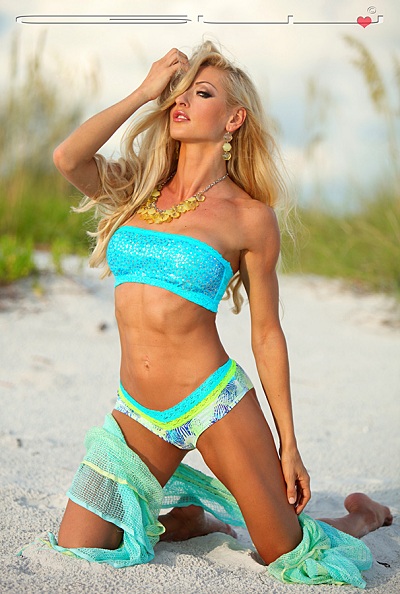
Photographer: GW Burns; Model: Ania Partin
MM EDU: How has the industry changed since you became a professional photographer?
GW: This is a high demand industry. So many people want to be professional photographers and the challenge you face is that when everyone starts out they’re willing to work for free. That’s okay because you have to pay your industry dues initially to build your portfolio, get people to work with you, use your images to get your work recognized, etc. However, if everyone does it for free there wouldn’t be an industry. So, there comes a point in every photographer’s career where they want to get paid for their work. That’s the bottom line.
The problem of so many people willing to work for free is coupled with the pressure on magazines to reduce costs and slash budgets since the Internet is destroying the traditional print publishing business model. The magazine industry just doesn’t care about quality the way it used to. Nowadays they’re looking for good enough and one of the easiest ways for them to cut costs is by using cheaper or even free photographers.
If we as photographers were all united and said, “No, you’re not printing my stuff for free,” the magazines would eventually pay you and raise the price of the magazine or try to do something else like that to cover their costs. But, the solidarity of photography is not there. There’s no union. There are professional organizations, but they don’t have the power of a union to protect prices. It’s every man for himself and I just don’t think that will end well.
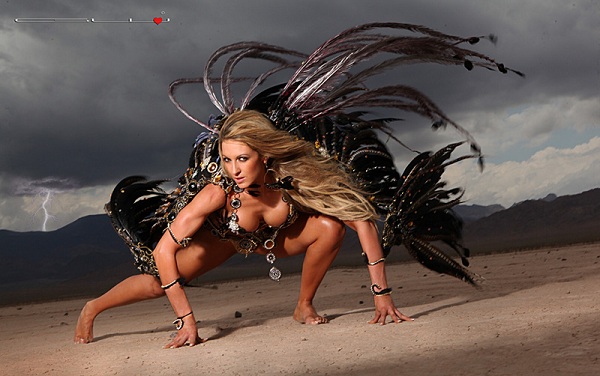
Photographer: GW Burns; Model: Stacey Louise
MM EDU: To an extent, aren’t you also training your competition by teaching workshops? Obviously it’s a valuable source of income and you enjoy teaching, but have you ever had people attend your workshops and then try to provide similar work for free?
GW: That’s true and I have had it happen before. I’ve had guys in the fitness industry come to my workshops and even while I’m sitting there I think to myself, “Wow, I’m teaching these guys how to beat me.” I’ve had assistants who’ve gone on to steal clients from me, so it happens. But the truth is I can go and set up the lights, find the location (or the set), bring the perfect model, give them the settings of the camera, and teach them how to use Photoshop, but I look at their photos afterward and they aren’t the same. They’re not the quality of pictures where I would say, “Wow, you really nailed it!”
There is more to being a photographer than just the technical knowledge. You need to have a type of artistic flair to be able to compose an image in your mind and then have it come out close to what you originally imagined. I don’t think you can teach that. Just because you go to a workshop doesn’t mean in two years you’re going to be shooting covers or anything like that. That’s the part of photography where the artistic merit still holds true and you need to have a natural gift. There are many photographers that are short on the technical end but long on the artistic end and they create fantastic images. A guy like Jeffery Scott comes to mind. He’s still using hot lights. He said to me, “I don’t know how you guys use strobes because I have to see the light.” But he produces phenomenal work. You just can’t teach that.
In his case, it’s fantastic work even though he might not even know how to use the lights like somebody else does, but the bottom line is his images look fantastic. That’s where the artistic application of photography is far more valuable that the technical skills and I don’t think you can beat that.

Photographer: GW Burns; Model: Nicholas Noethe
MM EDU: Finally, do you have any advice for people starting out?
GW: Getting started in the industry is tough and I’m fortunate to have the support of so many wonderful people that have helped me over the years. My mom’s been a huge influence. I mean without her there is literally no GW. But in more realistic terms she’s just been so supportive of me; she’s helped me financially and emotionally.
To make it in this business you need to have people to support you. You’ve got to have people that believe in you because there are times in every person’s career when they don’t know if they can do this or even if they want to do this.
You will have some models flake on you, or you will have a big gig that’s a wash, or one of your friends gets a gig and you’re happy for them but you also ask, “When am I going to get this opportunity?” That’s why you need a support system. Without the people that have been behind me we wouldn’t be having this interview today. I never thought I would do this for a living, but it was my passion and now I have my own studio in Sarasota. I’m proud of it, and I look at where I’ve come from and the sacrifices I made to get here. I gave up so many things that people take for granted to pursue my art but I did it because I knew that’s what it would take and I would do it again because that’s what drove me more than anything else.
Like I said earlier, if GW goes tomorrow, the fact that people can still look at what I have been blessed to see is all the payment I ever need.
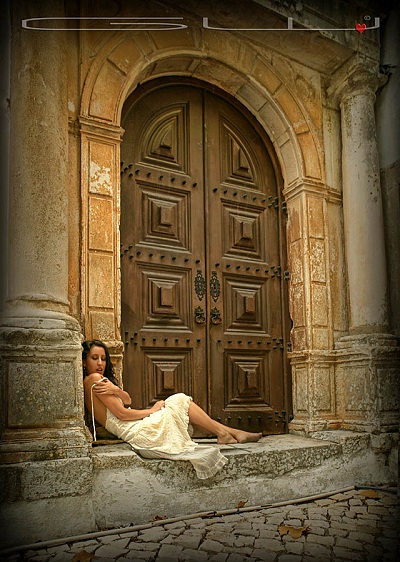
Photographer: GW Burns; Model: Diana
MM EDU: Thanks for sharing your story with us.
GW: You’re welcome, thanks!





January 09, 2016 at 7:35 am, Brett Charles said:
Brother, I look to you as a mentor and I hope that’s OK with you. I agree with the need for a story. Thank you for the images so far and a special thanks for the ones to come!
August 31, 2014 at 5:56 pm, miguelcaramelogoncalves said:
i like how much is a session?
August 20, 2014 at 10:16 am, Dean Allman said:
I agree. Took a workshop with GW in Fort Lauderdale back when OMP was going well. Very helpful to me, and he’s a great instructor as well.
August 18, 2014 at 2:35 am, alicia said:
Beautiful work
February 08, 2014 at 7:01 am, Eric Grapher said:
I’m fortunate to have taken one of GW’s workshops. Quite the enjoyable day. Highly recommend learning from GW to anyone wanting to push their art to a higher level. Beginners will learn a lot that they can apply immediately, and advanced photographers will learn to think about light in a different way.
October 24, 2013 at 8:59 pm, Jack Long said:
Thank you for the great interview on ModelMayhem. You have no worries about me as your competition. I am 70 Y.O. and I do photography, assistant photographer, photoshop, and character modeling as a hobby because enjoy being people and associating with creative people.
I’m like G.W. and take my basic inspiration from artists. Steve Hanks is my favorite artist because his work is about young family life from the male point of view.